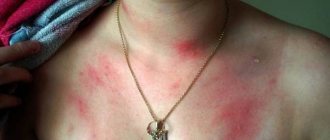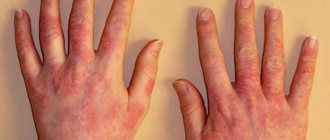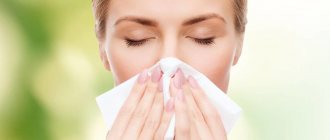What is a latex allergy?
A latex allergy refers to an abnormal and exaggerated reaction of the immune system after contact or inhalation of particles of latex, a liquid rubber derived from certain trees that grow in tropical areas of the planet.
Latex is used as a material in many common household items, including:
- latex gloves;
- condoms;
- balloons and inflatable balloons;
- toys;
- diving sports equipment such as fins, masks and snorkels;
- various medical devices;
- clothing, such as a raincoat.
Allergy to latex is manifested by various symptoms, among which are, for example:
- skin and mucous membranes: urticaria, redness and itching both on the skin and in intimate places, swelling and swelling, conjunctivitis;
- respiratory system: runny nose, sneezing, cough, asthma, shortness of breath, respiratory failure;
- anaphylactic shock and death (limited to very rare cases).
To diagnose latex allergy, an anamnesis and an objective examination of the suspected diagnosis are required, which is then confirmed by a basic test for allergens, an allergy test.
The best possible treatment for a latex allergy is obviously to avoid any possible contact with the specific particles, but from a pharmacological point of view, antihistamines and cortisone medications can be used, which significantly reduce the appearance of the allergy, relieving symptoms.
Dangerous children's accessories
For many years, parents have been using pacifiers to calm their children. Previously, they were made from special rubber, but then scientists conducted a lot of research and decided that it was safer to make this accessory from latex. For a long time, latex was considered absolutely safe for children, so the pacifier and pacifier industry worked at full capacity. But now this assertion is called into question.
Today it is precisely established that latex products can cause allergies. It is quite obvious that for newborns and babies up to one year old, such an allergy is especially dangerous, since they cannot immediately report a deterioration in their health, and parents may accidentally miss the first symptoms.
Causes and classification
An allergic reaction is defined as when the immune system develops an abnormal and excessive reaction to a substance called an “allergen.” In the case of latex allergy, contact may occur through the skin or through inhalation of microparticles.
When it comes to latex allergies, there are 4 different reactions:
- IgE-mediated reaction: This is an immediate reaction that is triggered upon contact or inhalation of latex particles due to the activation of IgE (a group of immunoglobulins), which activate mast cells to release histamine and other inflammatory mediators; the latter are responsible for typical allergy symptoms.
- Allergic contact dermatitis : This is a delayed type IV hypersensitivity reaction that involves the development of purely cutaneous symptoms several days after exposure to latex particles. Symptoms of the eczematous type with the skin: itching;
- redness and peeling;
- bubbles (blisters) that turn into crusts.
- dry and scaly skin;
- allergic symptoms of the skin and mucous membranes;
What is the difference between medical gloves?
What material are the gloves made of?
Gloves are made from various materials including latex, vinyl, nitrile, polychloroprene for use in medical and dental offices, various types of clean rooms, laboratories, food preparation, and light industry.
What are latex gloves?
Latex gloves are made from natural latex, which is obtained from the sap of the rubber tree, Hevea brazilian.
What are the characteristics of latex gloves?
Thanks to the elasticity of latex, the gloves provide excellent sensitivity, comfortable fit and durability, as well as protective properties.
Do gloves cause allergies?
Gloves can cause allergies if a person is hypersensitive and predisposed to irritant reactions to natural latex proteins or additives used in the glove manufacturing process. Reactions range from mild (skin rash, runny nose, itching, watery eyes) to more extreme manifestations such as swelling of the throat or face, difficulty breathing. Although in most cases there will be no or very few problems, it is possible that a very serious allergic reaction may occur in a small number of persons using the gloves.
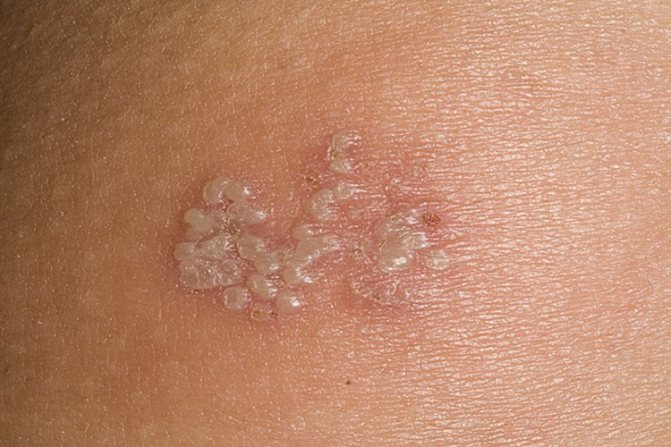
What is the difference between type 1 and type 4 allergies?
Type 1 is the most serious and rarest type of allergy that can be life-threatening (however, unlike the severe reaction some people have to a bee sting, it does not have such serious complications). This type of allergy is usually associated with latex proteins. A reaction may occur as a result of prolonged contact with latex products.
Type 4: Also known as allergic contact dermatitis. Manifestations: rash with blistering. Associated with additives used in the processing of rubber products. We offer products that are made without additives - more information is available upon request.
How can you tell if you have latex allergies?
The only way to know for sure is to test. Some examples of common reactions may include:
- skin rashes on hands
- rash on the face and skin if you do not wash your hands after using gloves
- tingling, swelling, or rash on the lips after contact with facial skin
- skin rashes, itching, swelling on the body upon contact with latex (clothing, underwear)
How to prevent the development of allergic reactions to latex?
We offer latex gloves with very low natural protein content, processed to bring it to the lowest industry standards. Despite all our precautions, some people may develop allergies. To avoid it, follow these instructions:
- Employees with allergies should wear non-latex gloves (vinyl, nitrile, polychloroproprene)
- Employees are required to remove dirt and dust that may contain latex from their work areas.
- Employees are required to familiarize themselves with the rules for using gloves
- Employees with latex allergies who work with potentially hazardous products should consult with a dentist or physician about preventing or mitigating an allergic reaction.
What are vinyl gloves?
Vinyl gloves are made from polyvinyl chloride, a petroleum-based compound.
What are the characteristics of vinyl gloves?
Although they do not fit as tightly and comfortably on the hand as latex gloves, they do not contain natural proteins that can cause irritation.
Even though softeners or plasticizers are added to vinyl to give the glove elasticity, vinyl does not stretch easily.
The cuffs are relatively baggy.
Vinyl gloves can be used for general protection for short-term use, where it is necessary to ensure safe contact with a minimum level of risk of infection or contamination, and vinyl gloves are also very suitable for hair depilation procedures. to vinyl, that sugaring, that wax sticks less.
What are nitrile gloves?
Nitrile gloves are made from a petroleum-based synthetic latex film that is formed by co-polymerizing butadiene with acrylonitrile to produce a dense material.
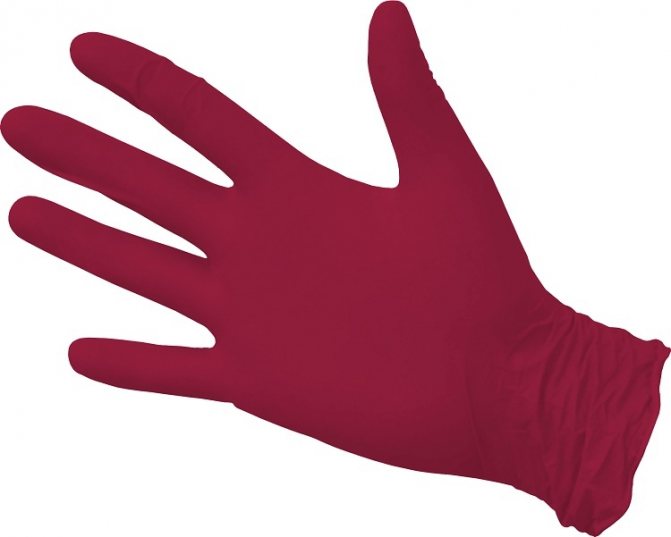
What are the characteristics of nitrile gloves?
Nitrile has good elasticity and flexibility, so gloves tend to mold to the shape of your hand after a few minutes. Moreover, nitrile gloves are puncture and tear resistant, very durable, and since they do not contain proteins, they do not cause allergies (type 1). Compared to vinyl and latex gloves, due to their high strength, nitrile gloves provide reliable protection against a wider range of chemicals and oils.
Here's another thing - nitrile and latex gloves can sometimes become discolored - Is this true?
Yes, but not in all cases. Discoloration can be caused by chemical reactions, usually between metal components that are already on the skin of the hands and the carbamate that is used as an additive in gloves. There are two different types that cause this reaction.
The first is that the employee held metal objects/tools (for example, coins) in their hands before use.
The second - more common - is the sweat that is released when working with gloves. The palms (as well as the forehead and feet) have a large concentration of exocrine sweat glands. One of their functions is to remove toxic metals such as copper, lead, zinc and mercury from the body. If an employee is in an area with a high content of these metals, there is a high probability that they will be released along with sweat. Although this is a natural reaction of the body, the frequency and intensity of discharge is always individual.
It is important to emphasize that this is a cosmetic effect (the chemical reaction causes discoloration or stains on the glove, but does not affect its performance in any way).
What are polychloroprene gloves?
Polychloroprene gloves are made from chloroprene (2-chloro, 3-butadiene) polymers that form a petroleum-based synthetic latex film. Very similar to latex gloves when used.
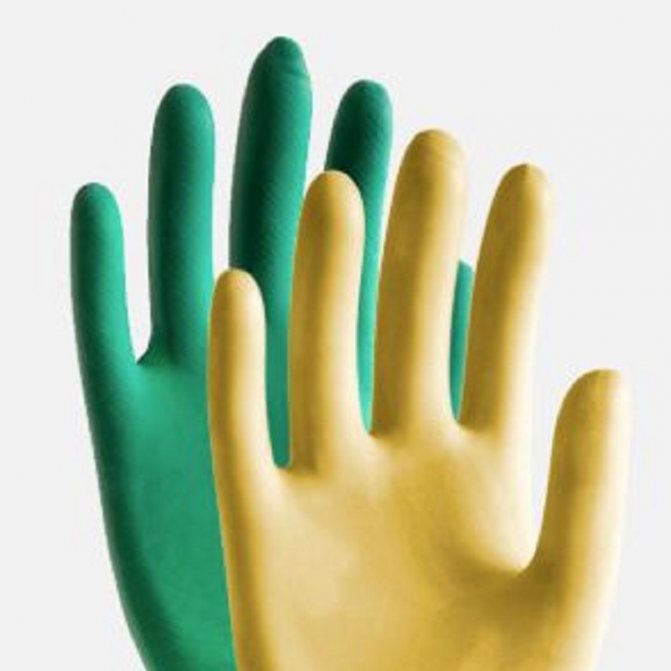
What are the characteristics of polychloroprene gloves?
Polychloroprene gloves are very elastic, this is their main similarity to latex, and are comfortable for use over a long period of time. Moreover, since polychloroprene does not contain proteins, they do not cause allergies (type 1).
Is there a difference between polychloroprene and neoprene?
No, it's the same thing. Neoprene is DuPont's registered brand name for Polychloroprene. Polychloroprene is part of a family of synthetic rubbers that are produced by polymerizing chloroprene.
I'm confused because some gloves are sized as small, medium, large, others are 7.0, 7.5, 8.0, etc.
Regular gloves (non-anatomical) are generally divided into small, medium, large and extra-large sizes.
Anatomical ones are usually classified by numbers: from 5 (smallest size) to 10.0 (largest) with an interval of 0.5. Dimensions for both types of classifications comply with EN455: 2000 and EN374-1: 2003.
Holes appear in gloves!
No manufacturer in the world can guarantee that their gloves are completely protected from punctures/tears. This is a recognized fact. To understand the process, remember that gloves are made by dipping a ceramic mold into a tank of liquid latex (or other material).

During the dipping process, the bubbles adhere to the mold as it passes through the tank. It is at this point that a thin layer appears, which is susceptible to possible punctures or tears.
To address this problem, EN 455, the European Standard for Medical Gloves, has set an absolute limit for puncture rates in accordance with the international standard ISO 2859-1. For example, in accordance with the EN 455 standard for general level 1 medical gloves, the limit on the number of punctures should be 1.5
In practice, this means that if we produce a batch of more than 500,000 gloves, 500 of them are tested for puncture and tearing. If 14 of them or less fail the test, the batch is accepted. If 15 or more, the entire batch is discontinued and cannot be sold as a medical instrument.
What does the CE mark mean?
Any product that undergoes quality control for use in Europe must have a CE mark - the manufacturer guarantees that its product meets all the requirements of the CE Directives.
Why do they sometimes put numbers next to the CE mark?
The CE mark implies different levels of regulatory certification (different levels of risk associated with the use of the device).
Low-risk devices may be labeled by the manufacturer itself.
High-risk devices must be approved by a certification company, which in turn must be accredited by regulatory authorities. Accredited companies have a unique identification number issued by EU members.
High-risk devices must be CE marked with the number of the accredited company involved in its approval.

When does a glove fall into Category 3 for chemical exposure?
According to the Safety Equipment Directive (89/686/EC), any “equipment providing partial protection against chemical attack” is an instrument of complex design (category 3)
Any glove that protects against "mild cleaning agents, diluted detergent solutions, etc." fits Category 1 Directive as a tool of simple design.
Thus, any glove that is designed to protect against anything other than the weakest chemicals is classified as a complex design and therefore Category 3.
How to distinguish a category 1 glove from a category 3 glove?
All gloves must be CE marked and Category 3 gloves must be tested and approved by an accredited company before being sold.
For category 1, a CE mark is sufficient; category 3 requires a CE mark and an accredited company number, for example 0120.
Some manufacturers write the word Cat.3 or something similar on the packaging, but this does not meet the standards. The term "Cat. 3 or Category 3" is a colloquial expression that is used instead of the long phrase "Safety equipment, complex tool"
How are gloves sterilized?
The most common method is gamma irradiation, which destroys all microorganisms. Gamma irradiation does not cause a significant increase in temperature or leave any chemical residues. Most of the gloves we offer are processed to Level 10-6 Sterility Guarantee.
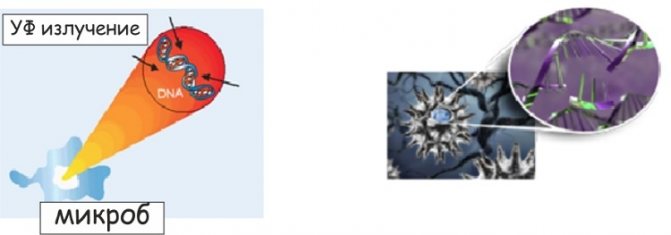
What does sterility assurance level 10-6 mean?
A sterility assurance level of 10-6 means that for every 1,000,000 parts sterilized, only one can contain bacteria that survive sterilization. The Sterility Assurance level proves that there is a statistical possibility that not all bacteria are 100% destroyed.
How can I tell if a glove is sterile?
The packaging clearly indicates which gloves are sterile.
Each box has a red circular sticker indicating that the contents have been gamma sterilized. Before sterilization the sticker is yellow, after - red.
There is also a certificate confirming the exposure, indicating the lot number and box number. These gloves are more expensive than their non-sterile equivalents.
If the gloves were sterilized by radiation, would they become radioactive?
No. Gamma rays penetrate directly through the packaging and destroy any bacteria in their path. This is a more natural phenomenon characteristic of gamma rays. They do not leave any traces of radiation. This is why gamma irradiation is the most preferred sterilization method among medical device manufacturers. It is also approved for food use.
What is the shelf life of gloves?
When stored properly, gloves do not have an expiration date as such. In reality, shelf life varies from product to product and is determined by a combination of industry regulations and requirements. In the case of sterile gloves, the shelf life is usually indicated on the packaging and can be from 3 to 5 years from the date of manufacture, provided that the integrity of the packaging is not compromised.
Can my gloves be used with cytotoxic drugs?
Comprehensive testing was carried out on the most commonly used drug in the American Society for Testing and Materials D6978. Excellent results were recorded.
What kind of powder is used in powdered gloves?
Typically it is cornstarch powder. However, using powdered gloves has its disadvantages:
- the powder may contain latex proteins, which can cause an allergic reaction;
- powder can interfere with the healing of scars;
- powder can spread microorganisms and therefore increase the risk of cross-infection.
What's the best way to store gloves?
Gloves should always be stored in their original packaging in a cool, dry and well-ventilated area away from dust, direct sunlight, moisture and heat. Recommended storage temperature: 5 to 35 degrees Celsius
Are the gloves reusable?
Gloves are disposable. Reuse is prohibited.
What's the fastest way to put on a glove?
The glove should be worn on clean and dry hands. Take the glove by the cuff and pull it up to your wrist. Make sure it fits completely around your fingers and is comfortable.
How to remove gloves correctly?
First, remove one glove by pulling the cuff. Then another. Do not handle used gloves with bare hands.
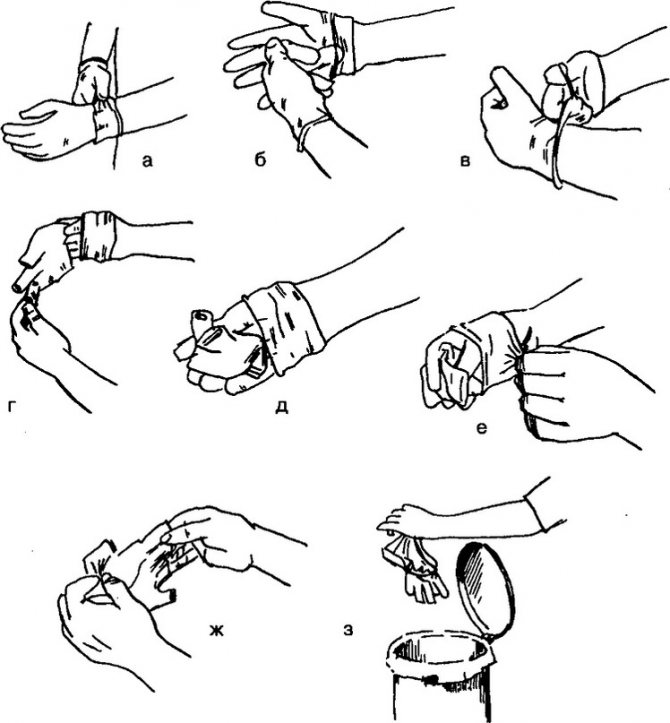
How to properly dispose of gloves?
It all depends on what kind of gloves were used and what procedures were carried out in it.
If gloves are contaminated with toxic compounds or biological material, they must therefore be disposed of in accordance with toxic materials disposal regulations.
Since normal aerobic or anaerobic decomposition processes in gloves do not produce toxic products, the gloves can be disposed of in any landfill. The destruction process will be very slow, except for products made of natural rubber. Incineration is the best choice, but can lead to air pollution.
The environmental impact of the disposal process of used gloves is a concern for all involved in various industries.
The following factors, depending on the type of material, must be considered when choosing incineration or landfill disposal:
Burning natural latex gloves is a fairly safe method, although some hydrocarbons, nitrogen chemicals and sulfur dioxide may be released at low combustion temperatures. When disposed of in a landfill, over time they are washed out of the soil or destroyed.
When vinyl gloves are burned, the polyvinyl chloride breaks down into hydrochloric acid gas, minor residual chemicals and ash. Under standard landfill disposal conditions, vinyl will not break down on its own in the soil. Before choosing to burn your gloves, make sure it is compliant with local laws.
In the process of burning nitrile gloves, a minimal amount of substances, which are based on nitrogen, is released. When disposed of in a landfill, residual chemicals will gradually be washed out of the soil. The nitrile itself will take a very long time to decompose.
When burned, polychloroprene gloves release hydrochloric acid gas, carbon monoxide and dioxide, various hydrocarbons and partially oxidized hydrocarbons. The gloves are not biodegradable. Local regulations should always be followed regarding the disposal of this type of glove.
Taking care of YOU, our loved ones!
https://
Order gloves on our website
Symptoms
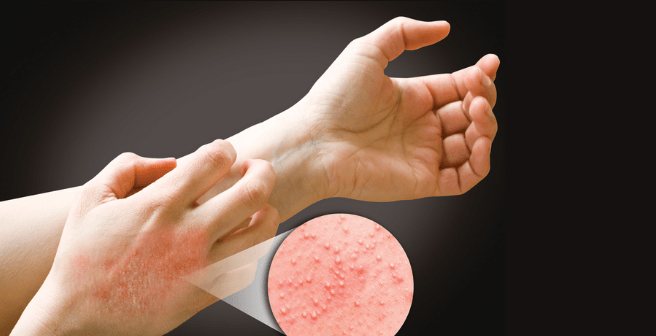
Symptoms of latex allergy vary depending on the sensitivity of the subject and the severity of the reaction.
It is appropriate to remember how each allergy sufferer can subjectively react to contact with a substance between two extremes:
- some patients will respond completely asymptomatically;
- in other cases, symptoms may be so severe that they require immediate therapeutic intervention.
The main and most common symptoms of latex allergy are:
- Skin and mucous membranes: urticaria (skin rash);
- swelling of the lips, tongue, eyelids;
- skin redness;
- widespread itching;
- conjunctivitis (inflammation of the mucous membrane of the eye).
- runny nose with sneezing and mucus discharge from the nose;
- gastrointestinal disorders and abdominal pain;
Sensitized subjects may experience a progressive exacerbation with each latex exposure, with increasingly severe symptoms until anaphylactic shock occurs and the risk of death occurs.
Basic consumer qualities
Vinyl medical gloves are becoming increasingly popular among customers. This is due to their physical properties and characteristics. Why do consumers prefer PVC products?
- Insoluble in alcohol, hydrocarbons and water.
- It has increased resistance to acids, alkalis and salts.
- They have proven themselves to be excellent when working with edible fats and petroleum products.
- PVC material is absolutely hypoallergenic.
- The use of an ultra-stretchable structure in vinyl synthetics provides a high degree of sensitivity during tactile contact.
In recent years, there has been a trend of increasing demand for gloves made of polyvinyl chloride, but the need for latex products is gradually decreasing.
Diagnostics
Diagnosis of latex allergy begins with a medical history, which allows the doctor to formulate a series of questions addressed to the patient, allowing him to reconstruct the construction of the medical history. People usually ask about this:
- If symptoms have already appeared in the past.
- If the patient is atopic and suffers from other allergies.
- If you have family members who are allergic to latex or other substances.
During the examination, the doctor carefully analyzes the symptoms and objective signs identified in the patient.

Diagnostic confirmation involves performing skin tests:
- Allergy testing : is the most widely used test to determine sensitivity and specificity in diagnosing many types of allergies. Latex extracts are placed in a solution on the forearm in the form of small drops. Each drop on the skin is pierced with a small needle. If skin reactions such as rash, erythema, blisters or vesicles occur in these areas, the test will be positive and confirm the presence of an allergy.
- Radioallergosorbent testing and other studies are performed less frequently and are limited to certain circumstances.
Does the disease occur in children?
Can a child be allergic to latex?
According to research data, the milky sap of the rubber tree, used to make pacifiers, pacifiers and other products for babies, is a powerful allergen and often causes symptoms characteristic of the disease. In babies of the first year of life, the pathology manifests itself under the guise of a cold, and is accompanied by sneezing, lacrimation, and nasal congestion. Skin reactions often occur (itching, redness, swelling of tissues). Children who already have a similar diagnosis in their medical history are at high risk of developing the disease.
https://www.youtube.com/watch?v=ytpressen-GB
In addition to medical workers, people who are susceptible to latex allergies are:
- Bronchial asthma, allergic dermatitis and other types of allergies
- Food allergies to bananas, avocados, kiwis, strawberries, tomatoes and some other foods
- Numerous surgeries in the past
- Bone marrow cell defect
- Anomalies of the urinary tract
- A urinary catheter with a rubber tip was inserted
Workers in the rubber industry and people who frequently use condoms may also react to latex.
Treatment and therapies
There is no definitive cure for latex allergy, so the most effective therapeutic option is to avoid any possible contact with latex-containing materials.
Particular attention should be paid to the patient in case of hospitalization, as there are many hospital and medical devices containing latex. In this case, it is necessary to warn medical personnel about his allergy as soon as possible so that all necessary precautions can be taken.
Antihistamines and cortisone medications can be taken to relieve allergic symptoms and improve quality of life.
Anaphylactic shock, a potentially fatal medical situation, requires emergency medical attention. The person should be admitted to the intensive care unit as quickly as possible with immediate treatment and close monitoring for 24 to 48 hours.
Scope of use of vinyl gloves
It is enough to look at the photo of vinyl gloves to understand that their scope of application is not limited to medicine and pharmaceuticals. The products have proven to be indispensable in veterinary clinics, where there is no need for prolonged contact with animals, but the requirements for the sterility of the doctor are very high.
Disposable vinyl gloves receive good reviews from workers in hairdressing salons, beauty salons, and cosmetology. They prevent direct contact of aggressive substances present in any hair dye with the skin of your hands. In addition, workers in the beauty industry are attracted by the color options of such gloves: they come in a variety of colors, and just look at the eccentric black vinyl gloves. The products can be used when working with food additives.
PVC gloves are suitable for a number of finishing works: painting and painting. There are also options for products with increased strength for use in construction. The scope of their application is constantly expanding, as evidenced by the growing volume of production of PVC gloves.
Latex: what is so much talk about?
Surprisingly, latex is a natural product. This light, milky substance is extracted from the rubber tree. The tree is called Hevea, popularly called “rubber tree”. Although rubber has never been considered synonymous with latex, since it is a complex mixture of various substances, natural latex and low molecular weight additives.
In nature, there are more than 2000 plants from which latex could be extracted, but Hevea remains the main one; 99% of latex products are obtained from this plant.
